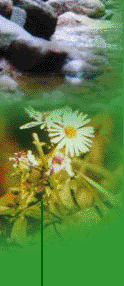Lizards are members of the class Reptilia and the order Squamata, along with snakes, worm lizards, and the Tuatara. The lizard suborder Sauria, with 3750 species, is the most successful group of living reptiles. The Sauria are further divided into four infraorders, Iguana (Iguanas), Gekkota (Geckos), Scincomorpha (Skinks), and Anguinomorpha (snake-like lizards), each containing several families.
Digestive System
The teeth of lizards are generally attached to the sides of the mandible without sockets. these teeth are regularly shed and replaced.
The only venomous species of lizards are the Gila Monster and the Mexican beaded lizard. These species have grooved rather than hollow teeth which have no direct connection to the venom glands. The venom glands are sublingual. Venom flows from the glands along the dental grooves and is injected by chewing action. The venom is primarily neurotoxic in nature.
The tongue of the lizard varies with the species. In general it is mobile and protrusible. Taste buds are poorly developed. Protrusion of the tongue is primarily for bringing scent particles to the Jacobson's organ for olfaction. The tongue is projectile for food gathering in chameleons. In green iguanas, the tip of the tongue is darker than the rest and should not be mistaken for a lesion. The stomach of lizards is simple, usually elongated, and not gizzard-like. Swallowing stones to aid digestion is not a normal behavior.
Reproductive
Lizards have breeding seasons determined by cycles of photoperiod, temperature, rainfall and availability of food. In males, there is a corresponding fluctuation in testicular size. Male iguanas and other lizards are often noted to be more territorial and aggressive during the breeding season.
Fertilization is internal. Male lizards have paired hemipenis that are sac-like and lack erectile tissue. They are stored in an inverted position in the base of the tail and may produce noticeable bulges in the lower tail region. Only one hemipenis is used at a time during copulation.
Female lizards have paired ovaries and oviducts.
Sex determination is difficult in juvenile specimens, but most adult lizards are sexually dimorphic. Mature male iguanas have taller dorsal spines, larger dewlaps and larger operculum scales than females. Male chameleons often have elaborate head ornamentation in the form of horns and crests that are lacking in the female. Many other male lizards have larger heads, bigger crests, brighter colors, erectable dewlaps, or are larger than females.
Nervous System
The reptile brain is more advanced with a larger cerebrum and cerebellum than that of amphibians or fish. Still, it is small, not exceeding 1% of the body mass. Reptiles are the earliest group of vertebrates with 12 cranial nerves. The spinal cord differs from that of mammals in that it extends to the tail tip.
An unbalanced diet may result in neurological symptoms.
SPECIAL SENSES
THE EAR
The ear has both auditory (hearing) and vestibular functions. The tympanic membrane (ear drum) is generally visible within a shallow depression on the side of the head. It is covered with thin transparent skin. In some lizards, like the earless lizard and horned lizards, the tympanic membrane is covered with scaly skin.
THE EYE
The Reptile pupil is usually round and relatively immobile in diurnal species and is usually slit-like in nocturnal species. Many geckos have a serrated pupillary opening that results in a series of small holes when the pupil is completely closed. the images passing through these holes are superimposed on the retina, resulting in very acute vision even in dim light.
Eyelids are usually present, except for some geckos and the oscellated skink, which have snake-like spectacles. the lower lid is more movable and moves upward to close the eye. In some lizards, the lower lid may be transparent, allowing vision when the lids are closed and the eyes protected.
Certain horned lizards can squirt an alarming amount of blood from their eyes in response to threats from predators. They rarely do this in response to humans, but will do so when molested by dogs, coyotes and foxes.
A well-developed parietal eye is found on the dorsal midline of the head in some lizards, such as the green iguana. It is a degenerate eye containing a lens and retina. It connects neurologically to the pineal body and plays a role in hormone (especially reproductive) production, thermoregulation, and regulation of the amount of time a lizard basks in sunlight. It does not form images.
RESPIRTORY SYSTEM
Nasal salt glands are present in herbivorous iguanid lizards such as the green iguana. When the plasma osmotic concentration is high, excessive sodium is excreted by these glands. The lizard may be seen to sneeze a clear fluid that dries to a fine, white powder, which is sodium chloride (salt). This mechanism allows water conservation and may be mistaken for an upper respiratory infection.
Vocal cords are occasionally present, notably in geckos, that can produce loud vocalizations.
AUTOTOMY
Many lizards are capable of tail autotomy, or loss of the tail. The advantage of autotomy is to escape predators when grabbed by the tail or to distract them. Tails are often brightly colored to attract the attention of predators and wiggle extensively for a few minutes when they detach. The lost tail is regenerated with a cartilaginous rod for support. It generally has smaller, darker scales in a more irregular pattern than the original tail and may be shorter and blunter.
Most iguanid lizards undergo autotomy, while most agamids, their old world counterparts, do not. Likewise, the monitors and true chameleons do not have fragile tails. Those species with strong tails usually can not regenerate a complete tail if the original is lost.
LONGEVITY
Green Iguana (Iguana iguana) 12 - 19 years
Cayman island ground iguana (Cyclura nubila) 33 years
Spiny -tailed iguana (Ctenosaura 4 years
Bearded Dragon (Pogona vitticeps) 10 years
Tokay Gecko (Gekko gecko) 23 years
Leopard Gecko (Eublepharis macularius) 21 - 25 years
Green anole (Anolis carolinensis) 7 years
Savannah monitor lizard (Varanus exanthematicus) 12 years
|




